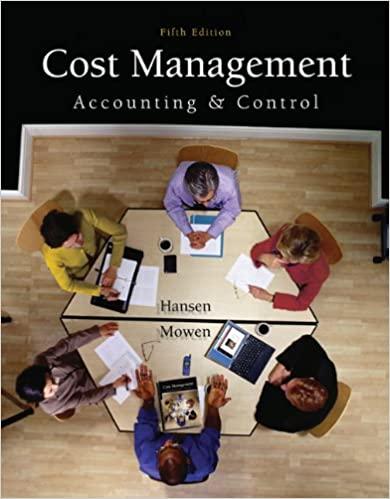4. Taxes and the Pandemic (30 points). Consider a two-period RBC model populated by households, rms, and a government. This model is similar to what we have in the class with one exception: the government collects value added (consumption) taxes and throws them into ocean. Households have the following preferences: U(c1, c2, `) = ln c1 (1 `) 1+ 1 + + ln(c2) where c1 and c2 denote consumption in the rst and the second period, respectively. Households receive disutility from working 1 `. Households earn labor income and own rms. There is a government that levies value added (consumption) taxes from households. Households have to pay a fraction t [0, 1] of their consumption in each period to the government. Note that taxes are not lump-sum in this model. The goods-producing rm only employs labor in the rst period and only capital in the second period. The investment rm rents capital to the goods-producing rm. The goods-producing rm's production functions are as follows: F1(L) = A1L F2(K) = A2K1 Answer the following questions: 1. (2.5 points)[easy] Write down tax expenditures of the households for each period. 2. (5 points)[easy] Write down intratemporal budget constraints of households for periods 1 and 2. Derive an intertemporal budget constraint. 3. (10 points)[moderate] Set up the problem of households. Derive rst order conditions. Obtain the Euler equation and the equation that describes the consumption-leisure decision. Is labor independent of consumption? Can taxes in the rst period 1 change households' labor decision? How about taxes in the second period? 4. (2.5 points)[easy] Write down rms problem and solve for their optimal choices. 5. (10 points)[hard] Suppose that there is a decrease in productivity in the rst period from A1 to A1 due to the pandemic, while A2 remains constant. What happens to labor? If it changes, suggest a government policy such that labor stays the same as before the pandemic. Write this policy instrument as a function of parameters only. Can this policy prevent a recession in the rst period?
4. Taxes and the Pandemic (30 points). Consider a two-period RBC model populated by households, firms, and a government. This model is similar to what we have in the class with one exception: the government collects value added (consumption) taxes and throws them into ocean. Households have the following preferences: U(c1,c2,)=ln(c11+(1)1+)+ln(c2) where c1 and c2 denote consumption in the first and the second period, respectively. Households receive disutility from working 1. Households earn labor income and own firms. There is a government that levies value added (consumption) taxes from households. Households have to pay a fraction t[0,1] of their consumption in each period to the government. Note that taxes are not lump-sum in this model. The goods-producing firm only employs labor in the first period and only capital in the second period. The investment firm rents capital to the goods-producing firm. The goods-producing firm's production functions are as follows: F1(L)F2(K)=A1L=A2K1 Answer the following questions: 1. (2.5 points)[easy] Write down tax expenditures of the households for each period. 2. (5 points)[easy] Write down intratemporal budget constraints of households for periods 1 and 2. Derive an intertemporal budget constraint. 3. (10 points) [moderate] Set up the problem of households. Derive first order conditions. Obtain the Euler equation and the equation that describes the consumption-leisure decision. Is labor independent of consumption? Can taxes in the first period 1 change households' labor decision? How about taxes in the second period? 4. (2.5 points)[easy] Write down firms problem and solve for their optimal choices. 5. (10 points)[hard] Suppose that there is a decrease in productivity in the first period from A1 to A1 due to the pandemic, while A2 remains constant. What happens to labor? If it changes, suggest a government policy such that labor stays the same as before the pandemic. Write this policy instrument as a function of parameters only. Can this policy prevent a recession in the first period? 4. Taxes and the Pandemic (30 points). Consider a two-period RBC model populated by households, firms, and a government. This model is similar to what we have in the class with one exception: the government collects value added (consumption) taxes and throws them into ocean. Households have the following preferences: U(c1,c2,)=ln(c11+(1)1+)+ln(c2) where c1 and c2 denote consumption in the first and the second period, respectively. Households receive disutility from working 1. Households earn labor income and own firms. There is a government that levies value added (consumption) taxes from households. Households have to pay a fraction t[0,1] of their consumption in each period to the government. Note that taxes are not lump-sum in this model. The goods-producing firm only employs labor in the first period and only capital in the second period. The investment firm rents capital to the goods-producing firm. The goods-producing firm's production functions are as follows: F1(L)F2(K)=A1L=A2K1 Answer the following questions: 1. (2.5 points)[easy] Write down tax expenditures of the households for each period. 2. (5 points)[easy] Write down intratemporal budget constraints of households for periods 1 and 2. Derive an intertemporal budget constraint. 3. (10 points) [moderate] Set up the problem of households. Derive first order conditions. Obtain the Euler equation and the equation that describes the consumption-leisure decision. Is labor independent of consumption? Can taxes in the first period 1 change households' labor decision? How about taxes in the second period? 4. (2.5 points)[easy] Write down firms problem and solve for their optimal choices. 5. (10 points)[hard] Suppose that there is a decrease in productivity in the first period from A1 to A1 due to the pandemic, while A2 remains constant. What happens to labor? If it changes, suggest a government policy such that labor stays the same as before the pandemic. Write this policy instrument as a function of parameters only. Can this policy prevent a recession in the first period







